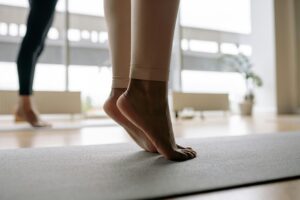What Causes Corns and Calluses and How a Foot Doctor Can Help
If you are experiencing discomfort while walking, a podiatrist may be able to diagnose and treat the issue. At Horizon Foot & Ankle Institute, we offer minimally invasive and surgical treatments for foot conditions like corns and calluses. Here’s more information about the causes of corns and calluses and the treatment types a foot doctor might recommend:

Causes of Corns
Corns are layers of hardened skin that develop on the feet due to excess friction and pressure. This pressure comes from poorly fitting shoes, structural misalignments, repetitive physical activities, and unusual gaits. If corns are common in your family, you may be more likely to develop the condition. To identify the cause of your corns, a foot doctor will ask questions about your health history and physical activity and examine the affected areas.
Treatments for Corns
Some corns can be treated at home to keep them from developing and affecting your quality of life. Our podiatrists may recommend switching to high-quality, comfortable shoes with a wider toe box. This helps reduce the amount of pressure on your toes and prevents existing corns from developing further. Placing custom orthotics in your shoes provides more support and reduces pressure on your feet.
Other treatment options a foot doctor at Horizon Foot & Ankle Institute could suggest include topical medications, Epsom salt baths, and moisturizers. Warm salt water and moisturizing lotions help soften the skin and make it easier to remove. A pedicure file or exfoliating scrub can help you remove the softened skin. To protect the area before and after treatment, apply a foam bandage around the corn. This creates a cushioned barrier that relieves discomfort while you walk.
In cases of severe corns, our podiatrists recommend corrective surgery. These procedures include removing the affected tissue or properly aligning the bones in the feet. A corn that has become infected or is unresponsive to other treatments may need to be surgically removed. Your podiatrist will remove the corn and some of the surrounding skin to encourage healthy growth and reduce discomfort. If you have bunions, hammertoes, or other structural issues causing corns to develop on your foot, a podiatric surgeon will remove bone deformities and reposition the bones to reduce friction and pressure. This allows your foot to fit more comfortably in shoes and improves your gait to reduce the risk of developing corns in the future.
Causes of Calluses
Calluses are similar to corns as they develop after consistent pressure and friction on the skin of the feet. The skin may toughen over time due to wearing shoes that are too tight or loose, participating in physical activity for extended periods, wearing no socks or poorly fitting socks, and having too much extra body weight. Calluses may cover a larger area of the foot and are likely to appear on the soles or heels. Hot spots and blisters on the foot can turn into calluses over time if they are not treated. Your doctor could perform a gait analysis to determine whether your calluses are caused by issues like flat feet, pronation, or supination. These issues cause friction along the sides and bottoms of your feet, resulting in callus formation.
Treatments for Calluses
To prevent calluses from developing, stop physical activity when you notice hot spots and blisters forming. Cover these areas and protect them from friction to prevent the skin from hardening over time. If you have calluses on your feet, soak them in warm water with Epsom salts to soften the skin. Regularly exfoliating the affected area helps prevent tough skin from building up and forming new calluses. Your foot doctor may recommend custom orthotic inserts for your shoes to distribute pressure evenly across your foot’s surface. Our podiatrists will examine your health history to determine whether a health condition could be contributing to callus formation. Health issues like diabetes, eczema, and psoriasis may lead to dry skin and pressure points that result in callus formation. Explaining your health history and genetic predispositions helps your podiatrist suggest an effective treatment method.
Podiatrists at Horizon Foot & Ankle Institute can remove large calluses by trimming or shaving the hardened skin. They remove each layer carefully to make sure they are trimming away only the dead skin to create an even surface. Elevating the foot and avoiding intense physical activity after this treatment allows your skin to heal properly and prevents irritation. If your calluses are caused by bone deformities, a surgical procedure to realign or reshape the bone could prevent calluses from returning in the future.
Visit a Foot Doctor for Corn and Callus Treatment
Horizon Foot & Ankle Institute offers a range of treatments for foot-related conditions like corns and calluses. If you are experiencing pain, discomfort, or difficulty walking, visit our team for a consultation and health assessment. Our team of professionals will examine the function, structure, and appearance of your foot, ankle, and lower leg to identify potential issues and recommend appropriate treatment methods. Contact us today to schedule an appointment.
